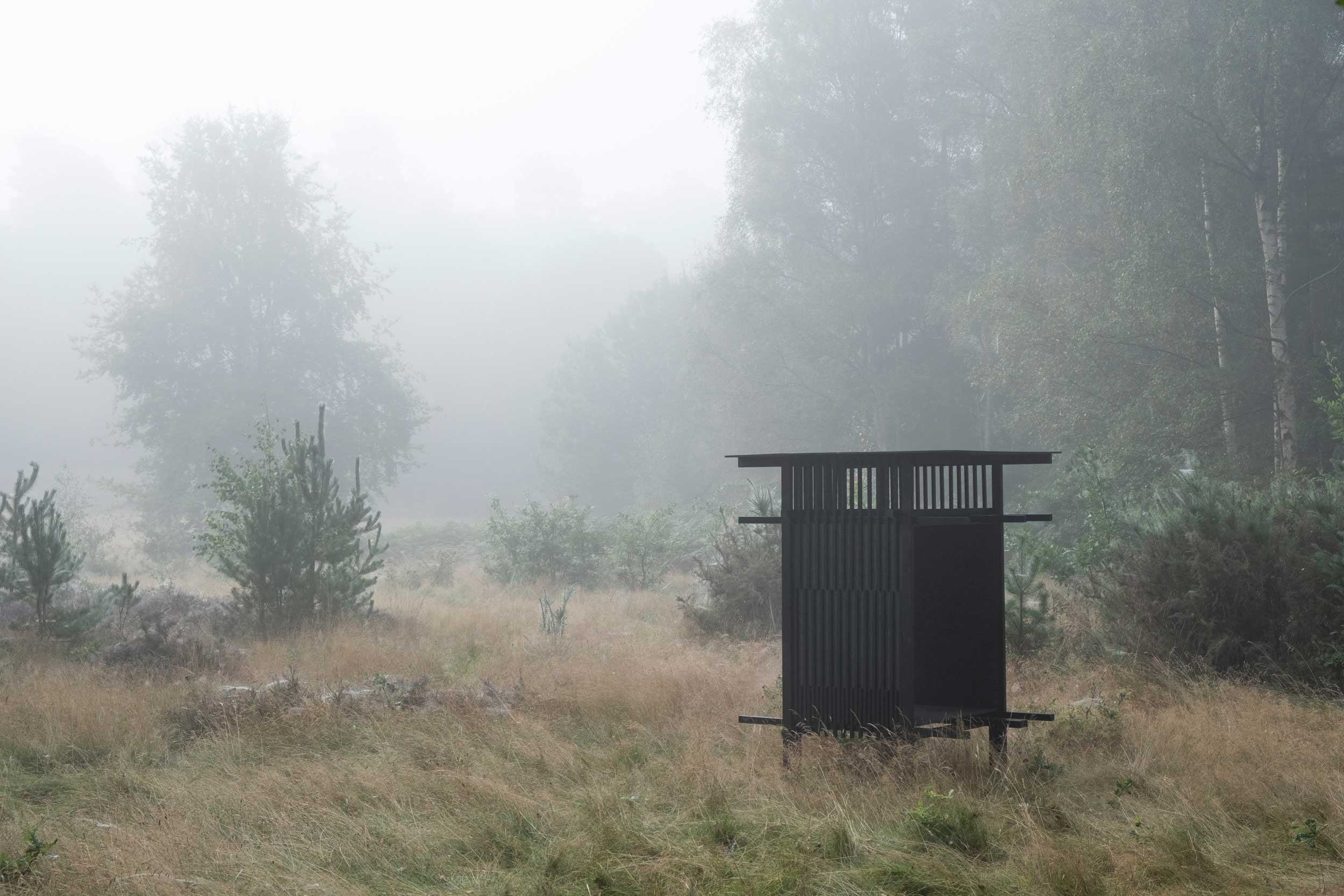Hide Cabin, Thetford
Hide is a protective space for walkers and bird watchers, providing a place to view natural surroundings and wildlife with minimal disturbance.
Towards the east coast of England lies the largest lowland pine forest in Britain covering over 45,000 acres in woodland. The land is laced with paths and trails that lead through open space and dense tree canopies. Emerging from a break in the treeline sits the Hide, an isolated cabin poised within the surrounding delicate landscape.
Hide is a resting spot for walkers and bird watchers, providing a place to view natural surroundings and wildlife with minimal disturbance. It can be seen as a ‘place of escape’ creating a calming and holistic space.
The name - Hide - is taken from a bird hide, an often sheltered, camouflage structure, that is used to observe wildlife at close quarters.
The design borrows ideas from its surroundings, a considered approach to what a temporary shelter could be and the function it provides. Wildlife is common in the area, with a variety of birds, insects and deer moving through the woodland. It was therefore important to use symmetry as a balance to create calmness to the space, framing views across the expansive woodland in a deliberate way to enhance the simplicity and minimalism.
The cabin is a small space and so each surface was well considered with a purpose and function. A large opening to one side forms the main shelter with a tough robust upper canopy roof. A suspended cube within a lightweight structure, akin to a bird's nest within a tree branch.
Hide is published in the following magazines:
Extensions of the timber structure allow visitors to hang their bag or a coat when resting. The front slim opening acts as a multifunctional crafted piece of joinery. Its foremost purpose is to frame the view from within, forming a protected and hidden view that casts light into the shelter, a contrast between natural light and darkness that varies as the sun tracks across the cabin, providing a sense of shelter in an open environment. The frame also doubles as a seat which folds down, creating additional places of pause on the outside of the structure.
The use of timber reinforces the honesty and use of materials, demonstrating the craft of construction with the knots and grains of the timber being apparent, adding a natural character that is visible across the cabin. A seamless continuation of surface and space is achieved vertically against the backdrop with the use of colour and a rhythmic pattern of the facade, broken up by openings proportional on each side.
The structure has been designed to be fully demountable and relocatable to alternative positions in the woodland. The location, far from an access road, dictated the decision to pursue a ‘flat pack’ design.
Each of the facade panels are pre-constructed and slot together on site within the main structural frame. This frame acts as a mounting support that can be tailored to suit the varied underlying topographical conditions. Each panel is then fixed in place with predrilled holes, minimising the construction noise and can be flat packed and transported by hand or by a small cart.
Hide is the protective space that provides a unique and individual experience, adapting to a choice; where visitors can take a break, study the wildlife or simply watch the world go by.


















